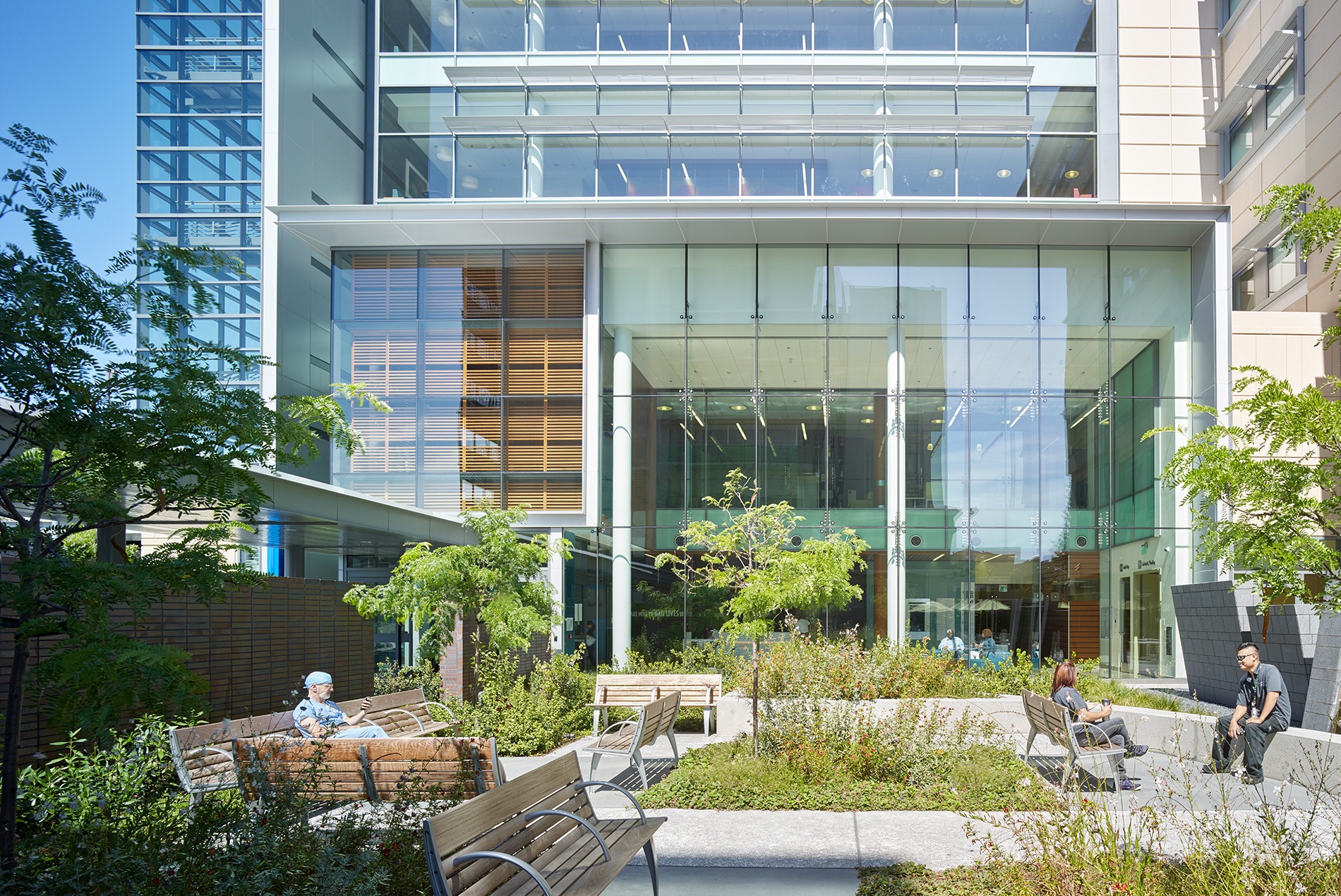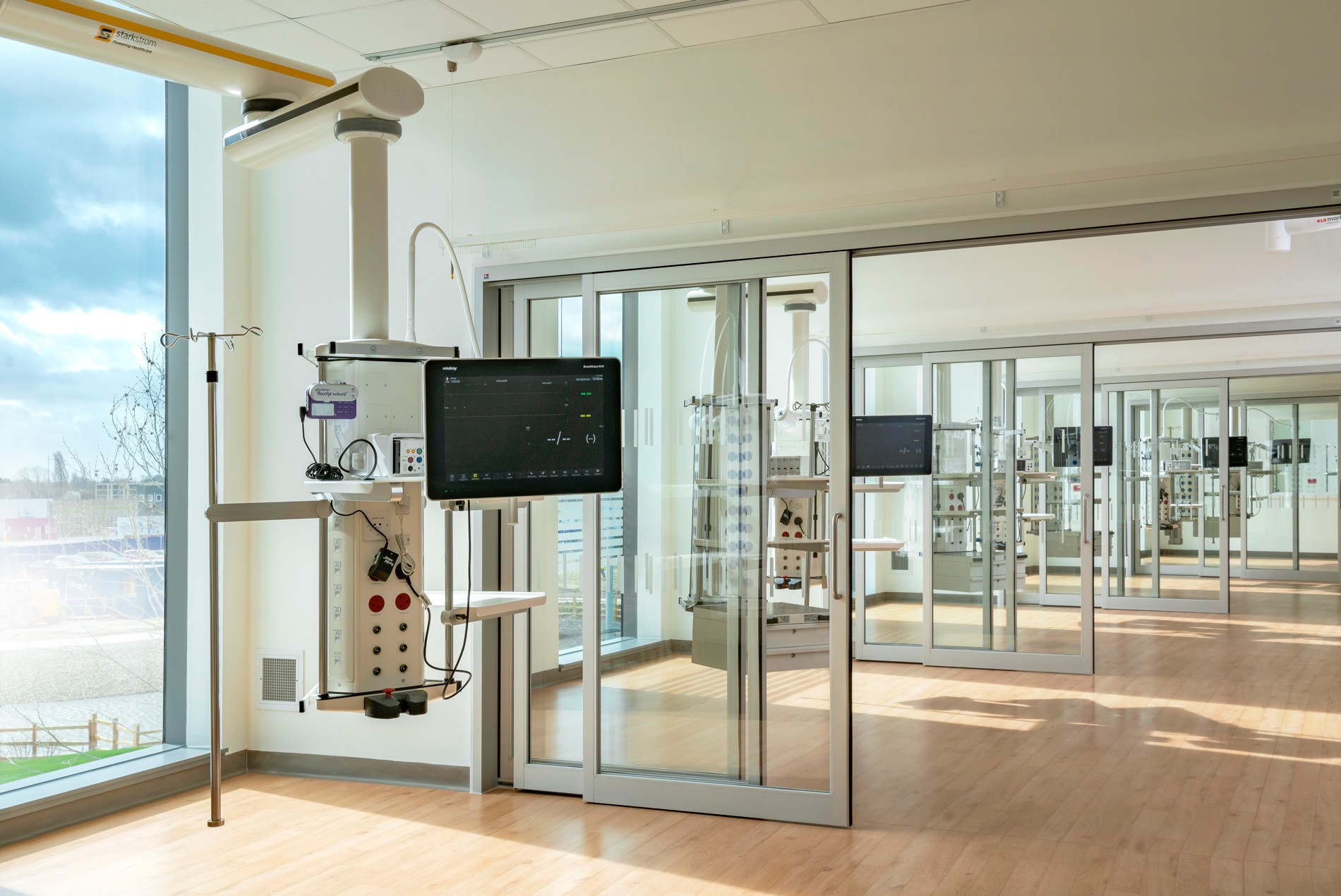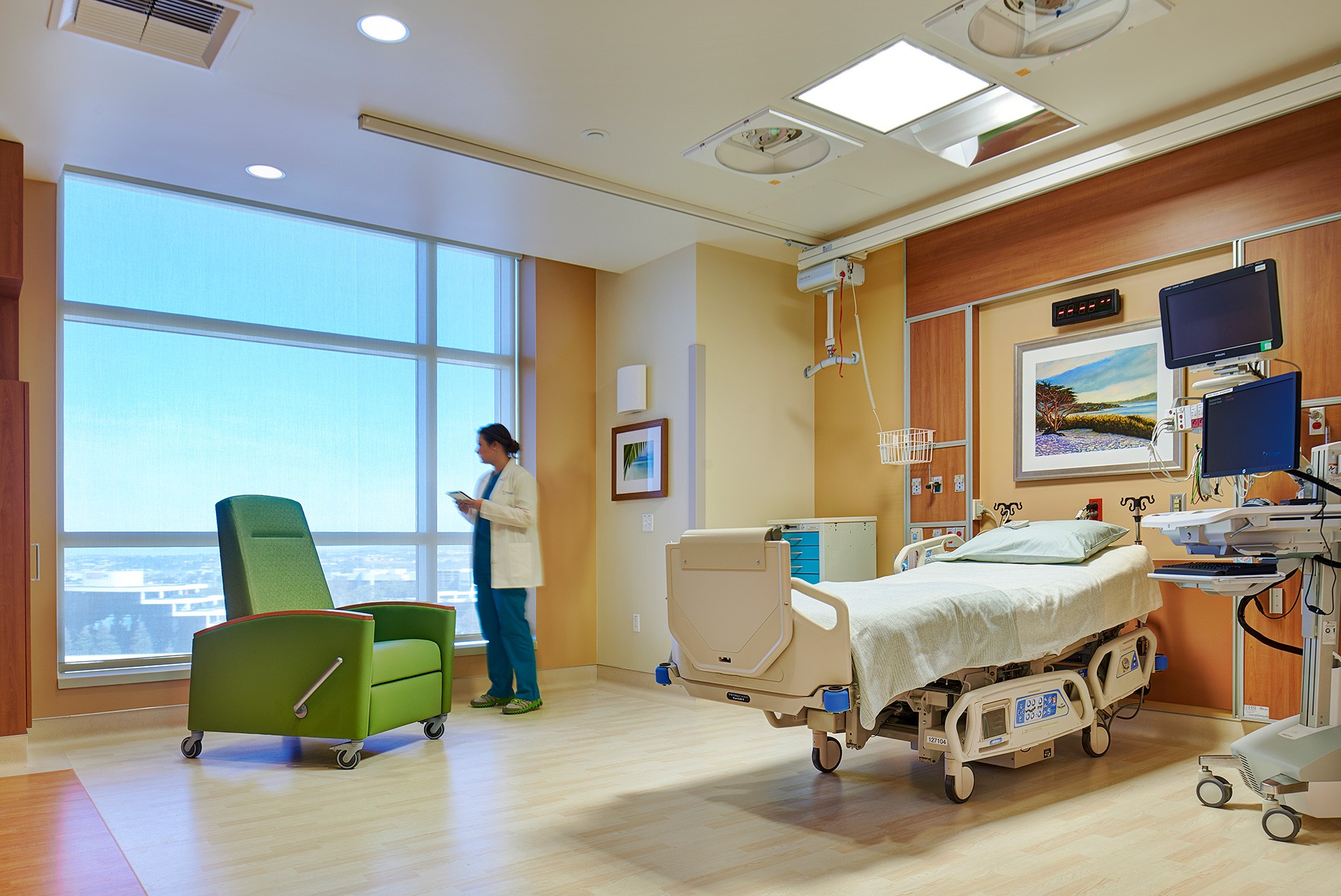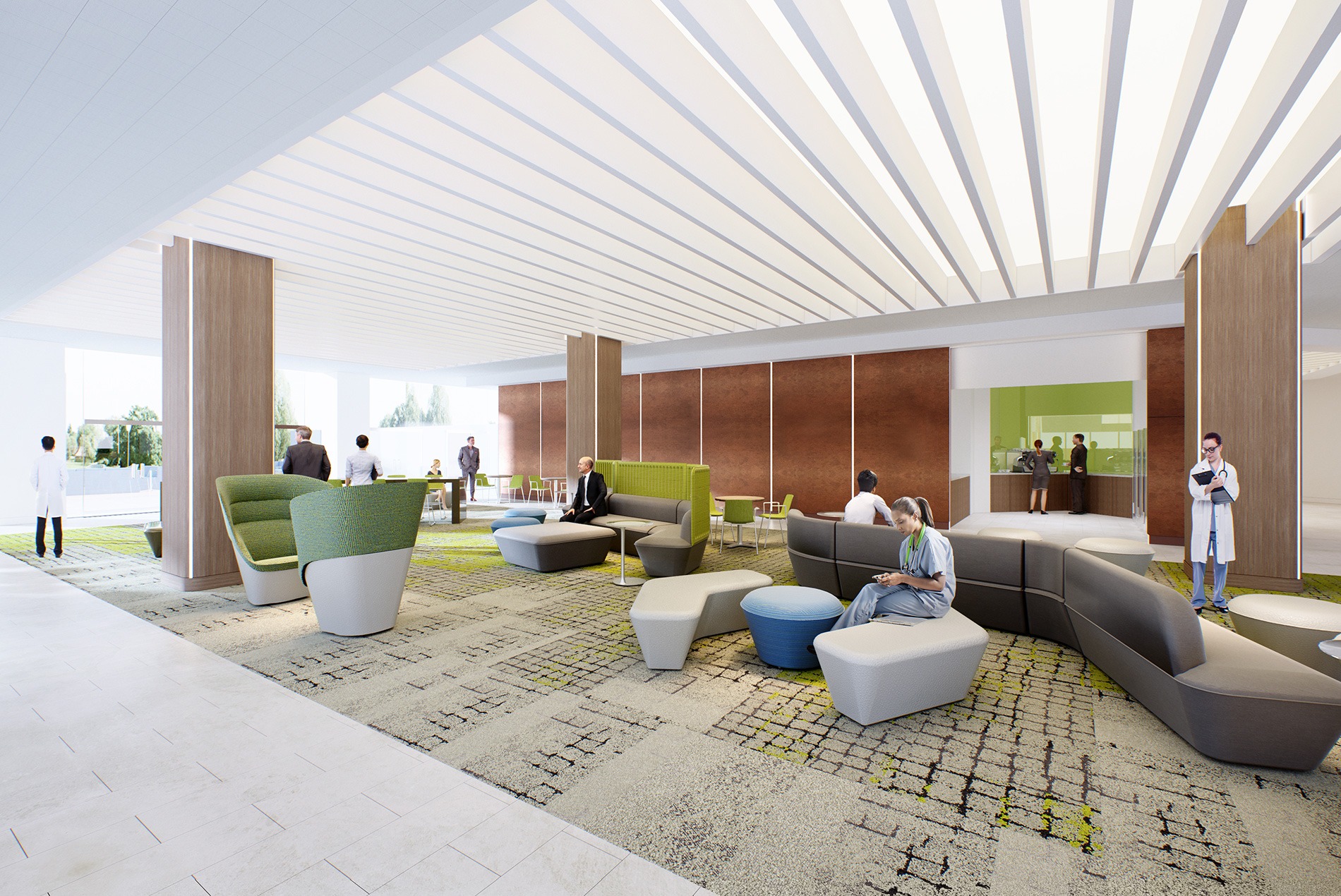Tony Roesch, director of HOK’s Healthcare Consulting practice, and Emily McGowan, a medical planner and Healthcare Design Magazine “Rising Star,” examine the healthcare design trends of the 2020s.
Like the first two decades of the 21st century, the healthcare industry in the 2020s will continue to be transformed by new innovations and technology. For patients and healthcare staff, these developments will be most evident in new tools, such as robotic surgical tables and intra-hospital delivery drones, that improve healthcare services and outcomes. Other changes won’t be as visible but could have an even greater impact as healthcare administrators and designers increasingly use data to create smarter, more efficient hospitals and medical spaces.
What follows are the four biggest trends that Roesch and McGowan believe will shape healthcare and medical design over the next 10 years.
1. Healthcare will be omnipresent and exist “without walls.”

“Healthcare is going to be evermore ubiquitous and exist in an omnipresent space,” said McGowan. “You’re already seeing this in the biomonitoring that comes with health apps and wearables. People are demanding healthcare anywhere and anytime. Going forward, healthcare will become more tethered to these types of cost-effective and convenient digital resources.”
This surge in healthcare data will yield subtle but significant changes in the way people access and receive care.
“Today the consumer accesses healthcare. In the future, healthcare will access the consumer,” said Roesch, who foresees technology changing the fundamental ways in which people and health systems interact.
“Think about Amazon’s purchase of Whole Foods,” he said. “Did that acquisition change the physical appearance of the stores? Not really. But it did change how the grocery chain functions and accesses your information.”
This breakdown in the traditional relationship between patients and providers will advance a trend from the 2010s that saw health services open in a variety of new and smaller settings.
“I think of this notion of healthcare operating as a ‘hospital without walls,’” said McGowan. “The hospital will no longer be the center of the health environment universe. Instead, the individual becomes the focus.”
When an individual seeks care, she will have a plethora of choices including at home (via telemedicine), an urgent care center, a pharmacy, an outpatient center, a medical office, a specialty clinic or a hospital.
“As designers, we must consider health beyond its traditional building type because healthcare is moving to more of a coherent, connected and coordinated framework,” said McGowan.
2. Hospitals will become more specialized, treating sicker patients during longer stays.

As healthcare expands into more alternative and outpatient settings, hospitals will become increasingly specialized, providing care for chronically ill patients.
“If you’re going to the hospital in the year 2030, you’re going there for a very serious reason and you’re going to stay there for a longer period of time,” said Roesch. “The question for designers becomes how do we create hospitals that make those stays as comfortable as possible for patients and their families?”
All-in-one operating rooms and patient rooms offer one solution. So, too, do family accommodations within hospitals. Elements of retail and hospitality design will continue to permeate into healthcare, with a focus on personalized service and attention. Just as Starbucks or Marriott use universal standards to promote familiarity and reflect their brand across hundreds of locations, public spaces will place more emphasis on the health system’s branding. On a one-on-one level, patients will expect physicians to use their data to offer more personalized solutions.
“Patients won’t settle for a one-pill-fits-all approach,” said Roesch. “People may have the same disease, but otherwise be very different—biologically, socially, environmentally and financially. People will demand an individual approach based on their unique health data. This is especially true when it comes to preventative medicine that will make it easier for physicians to diagnose and treat medical complications before they metastasize.”
With hospitals serving fewer, yet sicker, patients, McGowan envisions further consolidation within healthcare and the rise of more “super hospitals” tied to academic and research institutions.
“These are significant institutions in their communities that have traditionally been somewhat isolated or imposing,” said McGowan. “Over the next decade, I envision these campuses opening up as wellness districts or mixed-use areas that incorporate aspects of public health.”
Sustainable and resilient design will be increasingly important—and not just for environmental reasons.
“Tomorrow’s healthcare design needs to have resilience for changing economics, demographics and regulatory conditions, so these investments can adapt to evolutionary changes over time,” said McGowan.
3. Outcome-based care will translate to outcome-based design.

While aspects of the 2010 Affordable Care Act remain a topic of debate in the U.S., the law’s mandate regarding outcome-based care will likely remain intact for the foreseeable future. This provision links insurance and Medicare reimbursements to the health outcomes of a hospital’s patients.
“The two biggest factors impacting patient health outcomes are infection and falls,” said Roesch. “Healthcare design must focus on those as a top priority. The mantra over the next decade will be ‘safety, technology and comfort.’”
Design should also be beautiful, added Roesch. But first and foremost it must be safe.
“Technology and comfort—such as bacteria-resistant furnishings and flooring—can support the safety of hospitals,” said Roesch. “As designers, we must be bold in demanding that these design safety aspects don’t get value engineered out of a project.”
Data is increasingly shaping healthcare design, and that trend will only ramp up in the future.
“As designers, we are accountable to the metrics and need to show how the built environment can impact health in a justifiable and measurable way,” said McGowan. “Owners want that information to justify their design decisions. If they lay out their exam rooms in a certain way, for example, they want to know how it will lead to 20 percent greater efficiency and a 15 percent improvement in health outcomes.”
4. Patients and caregivers will demand more of their physical—and virtual—experiences.

Healthcare environments will become more engaging over the next decade in response to changing attitudes and technology.
“I don’t think people are going to accept being told to go sit in a room and wait for their name to be called,” said Roesch. “Hospitals and clinics need to think about how technology can streamline that process and how the spaces themselves can be more dynamic.”
Physical environments will become more inclusive in the 2020s, employing holistic design to address patient needs across multiple health spectrums, including mental and behavioral.
“This returns to the safety aspect,” said McGowan. “Health organizations cannot design to the minimum ADA (Americans with Disabilities Act) standards. The design needs to address the needs of everyone who can potentially navigate a space.”
Telemedicine will become more popular over the decade. Though this technology will allow patients to be treated without stepping foot into a medical setting, telemedicine will still alter the built environment.
“Caregivers have historically tolerated windowless offices and cramped conditions because they get such gratification from their physical interaction with patients,” said Roesch. “Now that they’re spending more time behind screens, healthcare operators will need to find ways to accommodate that type of work.”
Team-based care that melds physical and mental health with social and environmental well-being will continue to increase over the next decade. Staffing will also remain a challenge, with the Association of American Medical Colleges forecasting a shortage of 122,000 physicians by 2032.
“These trends point toward the need for spaces that allow caregivers to collaborate in new ways and for healthcare to leverage design to provide spaces that will help recruit and keep the most talented physicians and staff,” said McGowan.